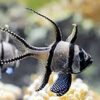Exploring the Role of Dragons in Chinese Blessing Rituals

Dragons, one of the most potent symbols in Chinese culture, have long been revered in various religious, cultural, and social contexts. They are considered auspicious creatures capable of bringing fortune, prosperity, and harmony to the people and the land. In the rich tapestry of Chinese traditions, dragons play a significant role in numerous rituals, particularly in blessing ceremonies aimed at ensuring good fortune, health, and success. This article explores the role of dragons in Chinese blessing rituals, examining how they are represented in these sacred ceremonies and what they symbolize in the context of Chinese culture and belief systems.
The Dragon as a Symbol of Blessings
In Chinese culture, the dragon is not just a mythical creature; it is a powerful, divine symbol of vitality, prosperity, and protection. Unlike Western dragons, which are often portrayed as destructive and evil, the Chinese dragon is generally viewed as a benevolent and majestic creature. It is associated with water elements such as rivers, seas, and rainfall, which are vital for agriculture and the sustenance of life. Due to these associations, the dragon is seen as a provider of blessings, particularly those related to fertility, abundance, and natural harmony.
In blessing rituals, the dragon is invoked as a bringer of good fortune. It is believed that its presence can purify negative energy, protect individuals and families, and attract positive influences. The dragon is often associated with celestial powers, making it a suitable figure to be invoked in rituals for divine intervention and support. As a result, the dragon is a central figure in various traditional Chinese ceremonies that seek to attract blessings for individuals, families, and entire communities.
The Role of Dragons in Chinese New Year Celebrations
One of the most well-known Chinese blessings rituals involving dragons is the celebration of the Chinese New Year, also known as the Spring Festival. This holiday, which marks the beginning of the lunar new year, is one of the most significant cultural events in China. The celebrations are filled with various rituals, many of which are focused on attracting good luck, fortune, and prosperity for the upcoming year.
During Chinese New Year celebrations, the dragon dance is a key feature of the festivities. The dragon dance is a traditional performance in which a long, colorful dragon is manipulated by a team of performers who move the dragon in a sinuous and lively manner. The dragon dance is believed to bring good fortune, drive away evil spirits, and ensure a prosperous year ahead. The dragon’s movement, often performed in a rhythmic and synchronized fashion, is symbolic of the flow of positive energy and the cyclical nature of life. The dance is meant to invoke the dragon’s power to bring blessings of wealth, health, and happiness.
The dragon’s role in the Chinese New Year celebration is also reflected in the elaborate decorations found in homes, temples, and public spaces. Red, a color traditionally associated with good luck and fortune, is often used to depict dragon motifs in various forms, such as lanterns, banners, and calligraphy. These dragon-themed decorations are believed to invite prosperity and drive away misfortune. As the dragon is seen as a protector and a bringer of abundance, these symbolic representations serve as a reminder of the blessings the creature bestows upon the household and community.
Dragon-Inspired Rituals for Fertility and Prosperity
Another significant aspect of Chinese blessing rituals involving dragons is their connection to fertility and prosperity. Throughout Chinese history, fertility has been a central concern for families, particularly those seeking to ensure the continuation of their lineage. The dragon, being associated with the water element, which nourishes the earth, is often invoked in rituals designed to promote fertility, both for humans and for crops.
In ancient China, certain ceremonies were performed to invoke the dragon’s blessing for a bountiful harvest. These agricultural rituals would take place in the spring, a time when the earth was believed to be most receptive to the dragon’s influence. In many rural communities, people would conduct prayers and offerings to the dragon, seeking its protection for their crops and animals. These rituals would often include dragon-shaped offerings made from fruits or vegetables, symbolizing the connection between the creature and the life-giving power of the earth.
Dragons were also a common motif in fertility-related rituals performed in temples dedicated to the gods of the earth and nature. These temples, which were spread throughout China, often featured dragon sculptures or carvings, signifying the dragon’s connection to agricultural prosperity and the protection of family lines. In some cases, couples experiencing difficulties in conceiving would visit these temples and perform rituals, asking the dragon for blessings of fertility and the birth of healthy children.
The Dragon in Wedding Blessings
The role of the dragon in Chinese blessing rituals is not limited to large-scale public ceremonies; it also plays an important part in personal milestones such as weddings. In traditional Chinese weddings, the dragon is a prominent symbol, often appearing alongside its counterpart, the phoenix. Together, the dragon and phoenix represent harmony between the masculine and feminine forces, a crucial element in Chinese marriage rituals.
The dragon’s presence in weddings symbolizes the groom’s role as a provider and protector of the family, while the phoenix represents the bride, embodying grace, beauty, and virtue. The combination of these two powerful symbols in wedding ceremonies is believed to ensure a prosperous and harmonious life for the couple. In many traditional wedding decorations, you will find dragon motifs embroidered on the couple’s clothing, carved into the wedding furniture, or painted onto ceremonial items such as wedding cakes and invitation cards.
Additionally, dragon symbols are used in wedding rituals to bless the couple’s future together. For example, during the wedding banquet, it is customary for the bride and groom to toast the guests using goblets or cups decorated with dragon designs. This act of toasting with dragon-adorned items is intended to symbolize the couple’s wish for a blessed and prosperous marriage, full of abundance and good fortune.
The Dragon in Taoist and Buddhist Rituals
In addition to its presence in public celebrations and personal milestones, the dragon also plays an important role in Taoist and Buddhist blessing rituals. Both Taoism and Buddhism hold deep reverence for the dragon, believing it to be a guardian of the universe and a source of spiritual power. In these religious practices, the dragon is often invoked to bring blessings of spiritual awakening, health, and protection from negative influences.
In Taoist rituals, the dragon is associated with the concept of Qi, the vital life force that flows through all living beings. Dragons are believed to help balance and regulate the flow of Qi, ensuring that individuals remain healthy and spiritually in tune with the universe. Many Taoist temples feature dragon statues or carvings, particularly near the entrances, as a way of warding off evil spirits and inviting positive energy into the space. During rituals, Taoist priests may chant prayers or perform ceremonies in the presence of these dragon symbols to invite divine blessings and healing powers.
Similarly, in Chinese Buddhist practices, the dragon is seen as a protector of the Buddhist teachings and a bringer of spiritual blessings. The dragon’s association with wisdom and divine protection makes it a popular figure in Buddhist temples, where it is often depicted in statues or paintings. In certain Buddhist rituals, the dragon is invoked to provide protection for practitioners and to help guide them along their spiritual path. Dragons are also depicted as guardians of sacred texts or relics, guarding these treasures from harm and ensuring their continued influence.
The Dragon in Modern Blessing Rituals
While dragons are deeply embedded in ancient Chinese traditions, they continue to play a significant role in modern blessing rituals. In contemporary China, the dragon is still a beloved symbol of good fortune and prosperity, appearing in various modern celebrations and events.
During the annual Dragon Boat Festival, which celebrates the summer solstice and honors the ancient poet Qu Yuan, dragons take center stage. Dragon boat races are held in cities and towns across China, where teams paddle long, dragon-shaped boats in a display of strength and skill. The event is considered a blessing ritual for both the participants and the community, invoking the dragon’s blessings for health, prosperity, and success.
In modern Chinese weddings, dragon motifs are still popular. Many young couples today incorporate dragon designs into their wedding attire, decorations, and ceremonies, believing that the dragon’s blessings will ensure a prosperous and happy life together. The dragon continues to be an enduring symbol of the divine forces that protect and guide families.
Conclusion
The role of dragons in Chinese blessing rituals is deeply rooted in the country’s rich cultural and religious traditions. From the grand celebrations of Chinese New Year to intimate wedding ceremonies and agricultural blessings, the dragon is revered as a powerful and benevolent creature capable of bringing good fortune, prosperity, and harmony. Whether performing the dragon dance, invoking the dragon’s blessings for fertility, or using dragon motifs in Taoist and Buddhist rituals, the dragon remains a central figure in Chinese belief systems, embodying the forces of nature, spiritual protection, and cosmic balance. In these rituals, the dragon continues to be a beloved symbol of divine favor, ensuring that blessings flow abundantly to those who honor its power and significance.


